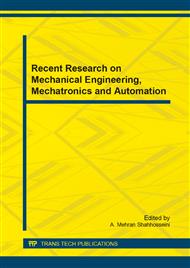p.197
p.209
p.214
p.219
p.224
p.230
p.239
p.243
p.247
Numerical Simulation of Insulation Layer Ablation in Solid Rocket Motor Based on Fluent
Abstract:
A two-dimensional axisymmetric model was constructed to predict the ablation of the insulation layer in an end burning rocket motor by using the Computational Fluid Dynamics (CFD) software Fluent. The insulation material of graphite was used in the model. The wall surface reactions and discrete phase erosion were applied to simulate the insulation layer ablation. The influence of the burning surface movement was analyzed by using the dynamic mesh method. Numerical results show that the erosion rate increase with the increasing of burning time. The maximum erosion rate occurs at the upstream of the nozzle throat. There has a high erosion rate closing to the burning surface, and it decreases gradually away from the burning surface and becomes zero near the nozzle. It’s found that solid particle deposition appears on the inner surface of combustor closing to the nozzle, and it increases with the increasing of time.
Info:
Periodical:
Pages:
224-229
Citation:
Online since:
July 2014
Authors:
Keywords:
Price:
Сopyright:
© 2014 Trans Tech Publications Ltd. All Rights Reserved
Share:
Citation:


